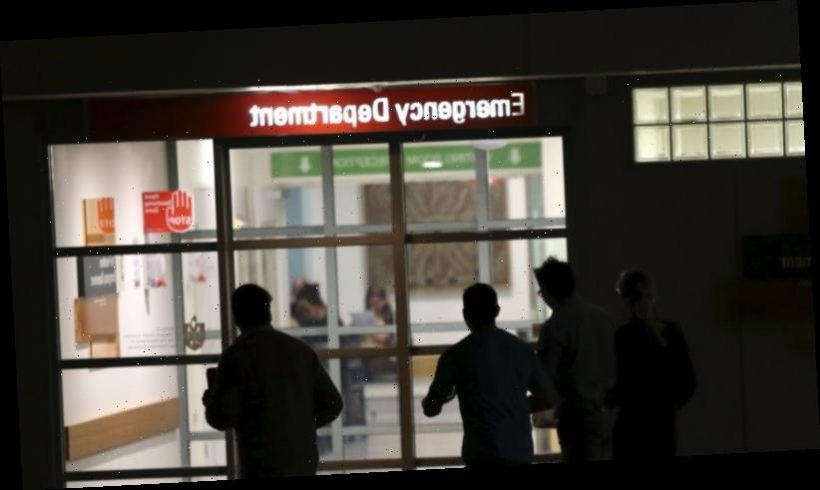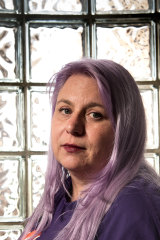Mental health crisis centres are set to be opened throughout Victoria after a state royal commission concluded triple-zero calls and visiting emergency wards should no longer be the only options for people in crisis.
Suicidal and psychotic patients had been spending hours and sometimes days waiting in emergency departments, which doctors and advocates said were the worst possible environments for those in psychological distress.
Mental health advocate Indigo Daya.Credit:Justin McManus.
One of the key recommendations of the Royal Commission into Victoria’s Mental Health System was for the Victorian government to build a drop-in or crisis respite facility in every region, plus four “safe space” facilities specifically for young people.
It was hoped the new centres would turn the treatment of mental health crises on its head by being “the very opposite of emergency departments”.
Advocate Indigo Daya said hospital emergency departments “are in almost every way the wrong place for someone with a mental health crisis”.
“They are loud, they are bright and noisy … and staff don’t have time to sit with somebody and find what is going on,” she said.
“If your readers think about where they would want to be on the worst day of their life, you want a friendly set up with comfy chairs and a coffee table, and someone there to sit with you and listen with empathy.”
Five key recommendations
The Royal Commission into Victoria’s Mental Health System published its 3195-page final report on Tuesday which found the mental health system was overwhelmed and could not keep up with the number of people who sought treatment.
Premier Daniel Andrews has committed to implementing all 65 recommendations made in the report, which include:
- Establish dozens of local adult, youth and child mental health services in a variety of locations, reducing the need for people to travel a long way from home. This would include up to 60 new services for adults.
- Create new crisis facilities and “safe spaces” for adults and young people, designed with the help of people with personal experience of psychological distress. When possible, the emergency response to urgent mental health crises should be led by medical professionals instead of police.
- Create a new non-government agency led by people with personal experience of mental illness and psychological distress. One of its roles will be to help deliver mental health training.
- Throw out the old Mental Health Act and enact a new one preferably by the end of the year, with a primary objective to achieve the highest attainable standard of mental health and wellbeing for all Victorians. A number of bodies and roles will be established, including the Mental Health and Wellbeing Commission and the Regional Mental Health and Wellbeing Boards.
- Immediately reduce the use of seclusion and restraint in mental health, with the aim of eliminating the practices within 10 years. Immediately ensure compulsory treatment is only used as a last resort.
Australasian College for Emergency Medicine Victoria faculty chair Mya Cubitt welcomed the commitment to reform, but said with patients still spending days in ED, action was needed urgently, as well as more transparency around wait times.
“We absolutely need to stress the urgency of some of this implementation,” Dr Cubitt said.
Grace McLoughlan said she had arrived at hospital emergency departments multiple times over the years, distressed, suicidal and desperately seeking help, only to be turned away.
“Typically, there’s nothing they can do,” she said. “I have been told my safety is my responsibility and been sent home … more suicidal than when I arrived. I’ve been told that there’s just no beds, and they can’t help me.”
The Northcote woman said the recommendation to create crisis respite centres for experiencing a mental health episode gave her hope that people in despair would not be left waiting days in emergency departments.
Ms McLoughlan said such models should mirror Safe Haven Cafe, a community drop-in centre run by St Vincent’s Hospital.
“It’s really underfunded, but they do such a great job with the resources that they have,” she said. “I use that service, I have been there a few times. The staff are so kind and it has kept me out of hospitals and emergency departments. It’s never been a negative experience. I feel safe there.”
The Andrews government pledged to implement all the recommendations of the royal commission, which also recommended that wherever possible, the emergency response to urgent mental health crises should be led by medical professionals instead of police.
“If your readers think about where they would want to be on the worst day of their life, you want a friendly set up with comfy chairs and a coffee table, and someone there to sit with you and listen with empathy.”
This would result in triple-0 calls involving mental health crises to be diverted to Ambulance Victoria, and any response led by paramedics, instead of police.
Often these crises came about because the system had done a poor job of helping people before their mental health deteriorated, a phenomenon described as the “missing middle”.
Doctor James Antoniadis, of the Royal Australian College of General Practitioners, said it was this group of people with moderate to severe depression and other mental health conditions that accounted for the most suicides, because they were the largest.
“There are a lot of situations where people are in desperate need. They go to EDs and there is nowhere for them to go, and then they are discharged,” Dr Antoniadis said.
“It’s like a merry-go-round, unfortunately people ending up falling off the merry-go-round.”
The new safe spaces and crisis respite facilities would be set up in collaboration with a new agency made up of people with personal experience of mental health crisis or distress.
Dr Antoniadis said he hoped they would look more like community health centres, staffed by people trained in mental health emergencies, including psychiatrists, specialist nurses, psychologists and GPs.
He said they should also include beds for people who needed longer-term care.
“Hopefully those facilities are more like a hotel than a mental health asylum,” he said.
Start your day informed
Our Morning Edition newsletter is a curated guide to the most important and interesting stories, analysis and insights. Sign up here.
Most Viewed in National
Source: Read Full Article

